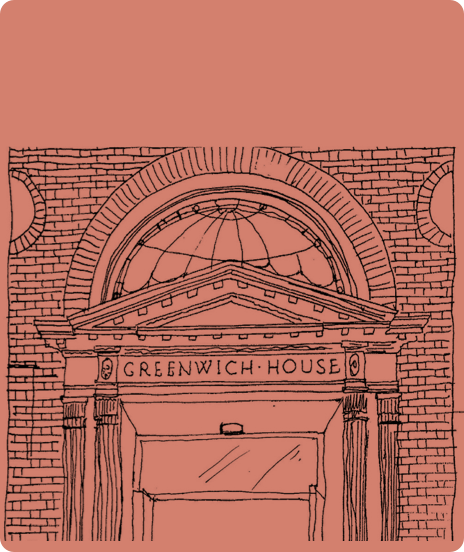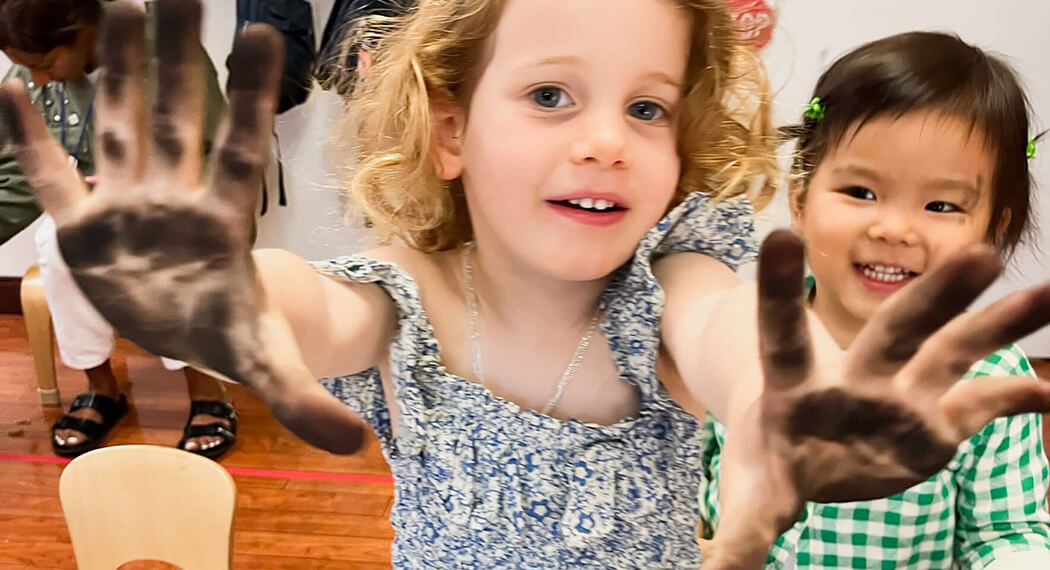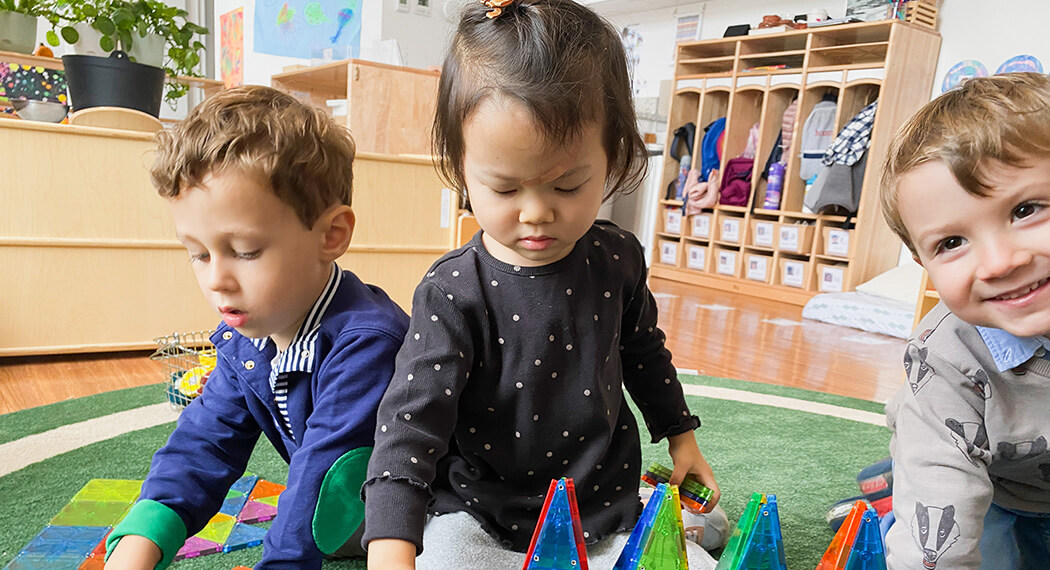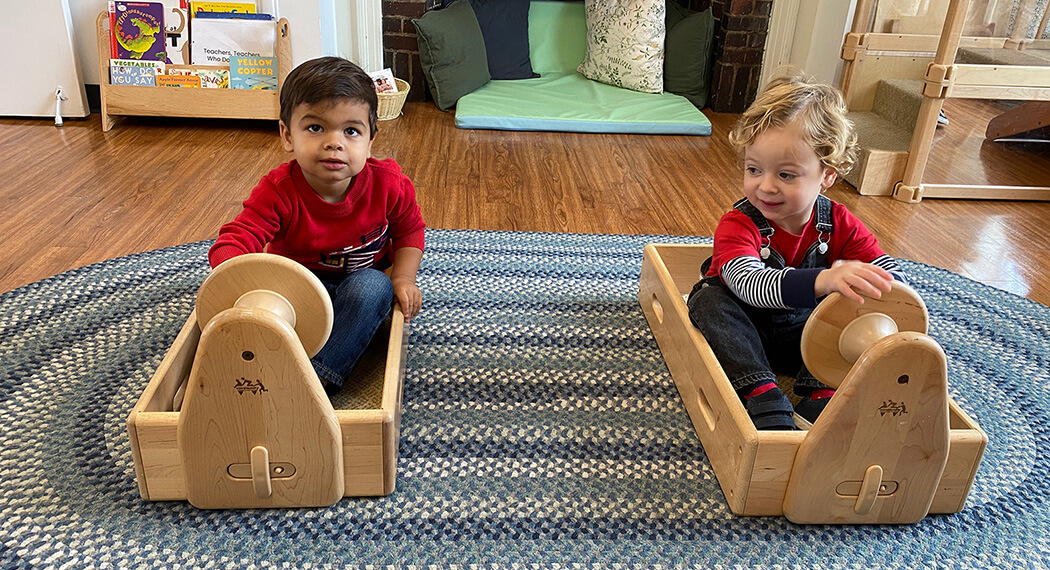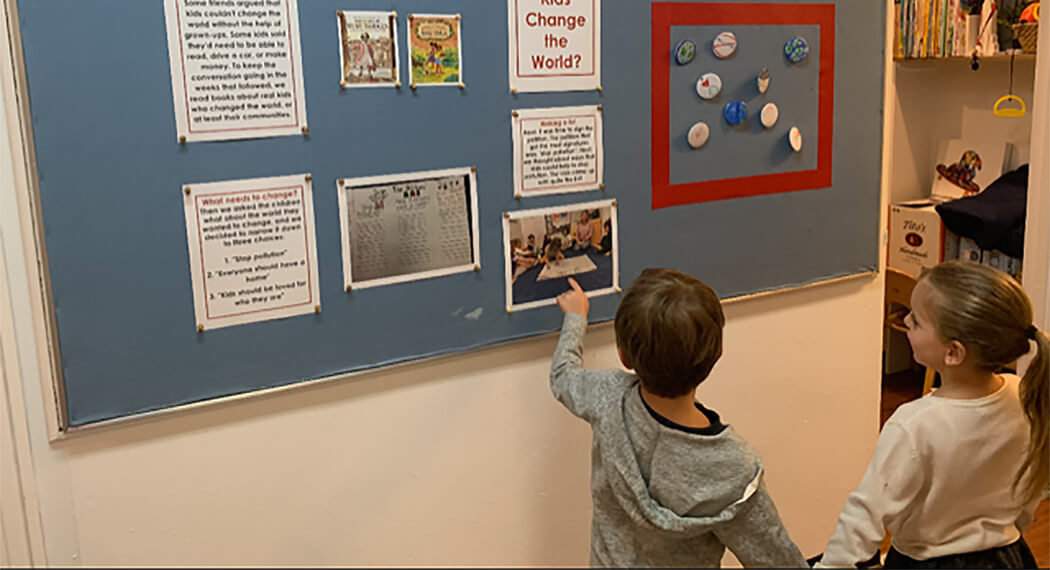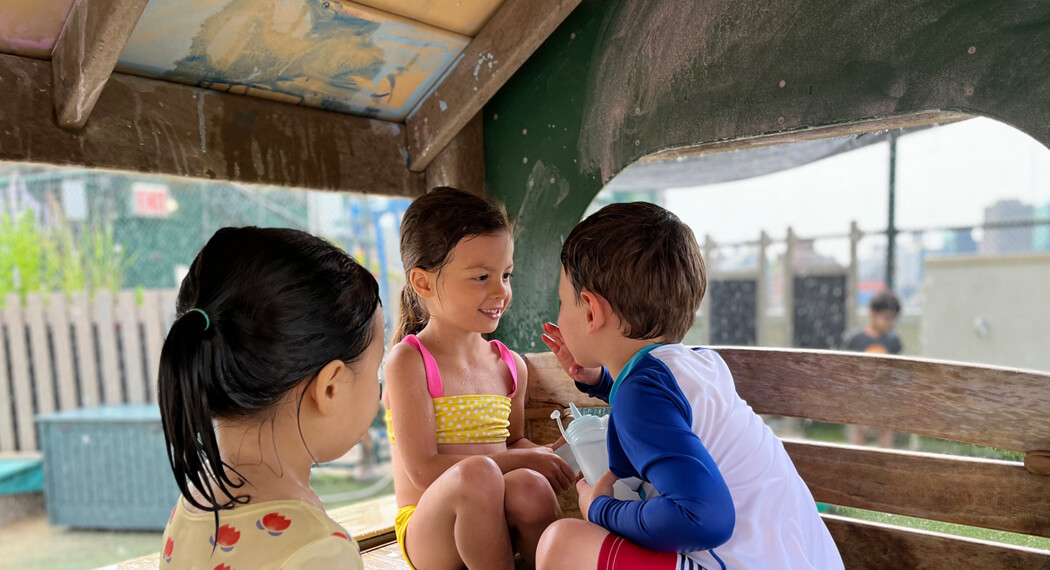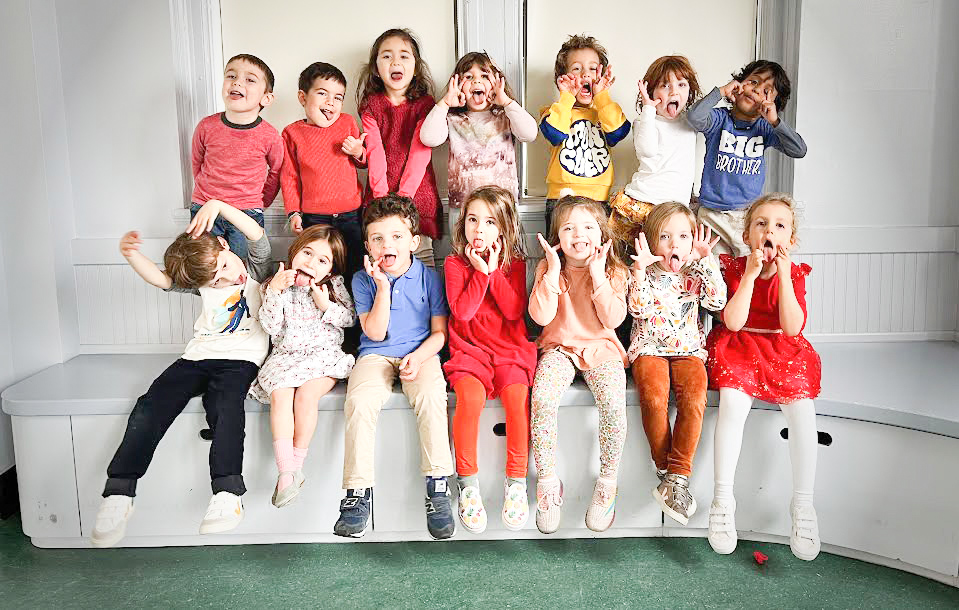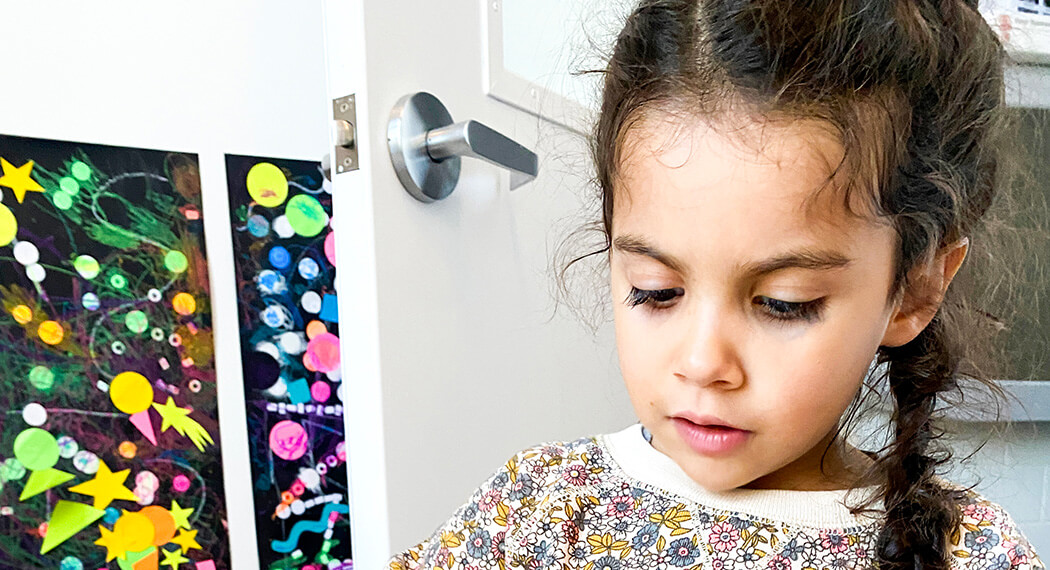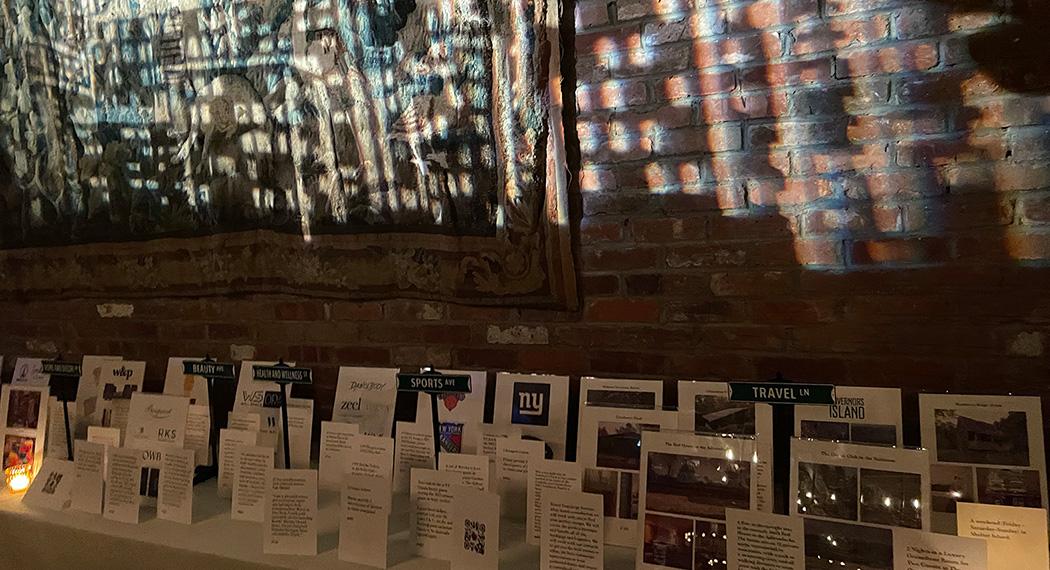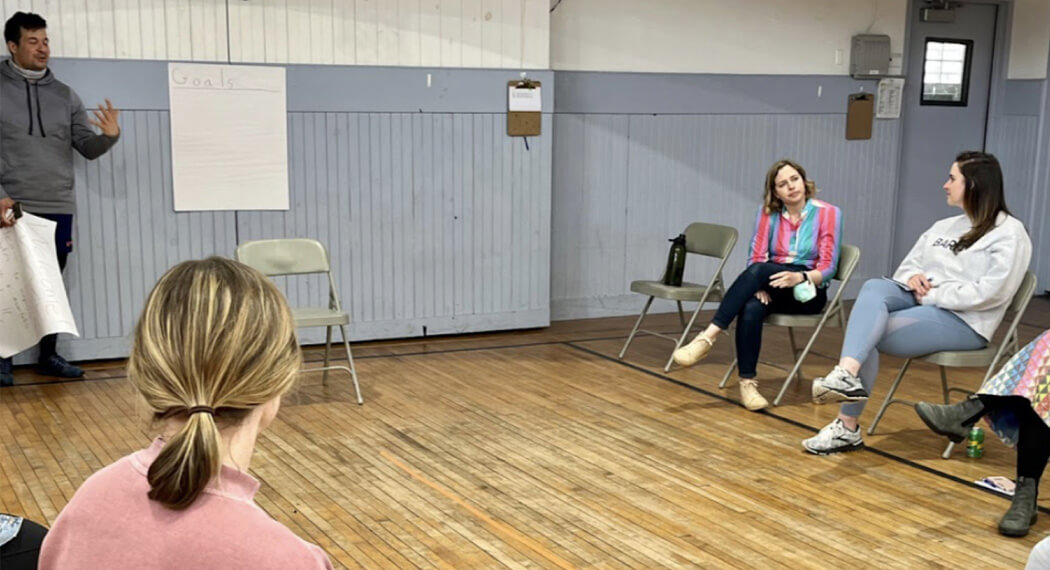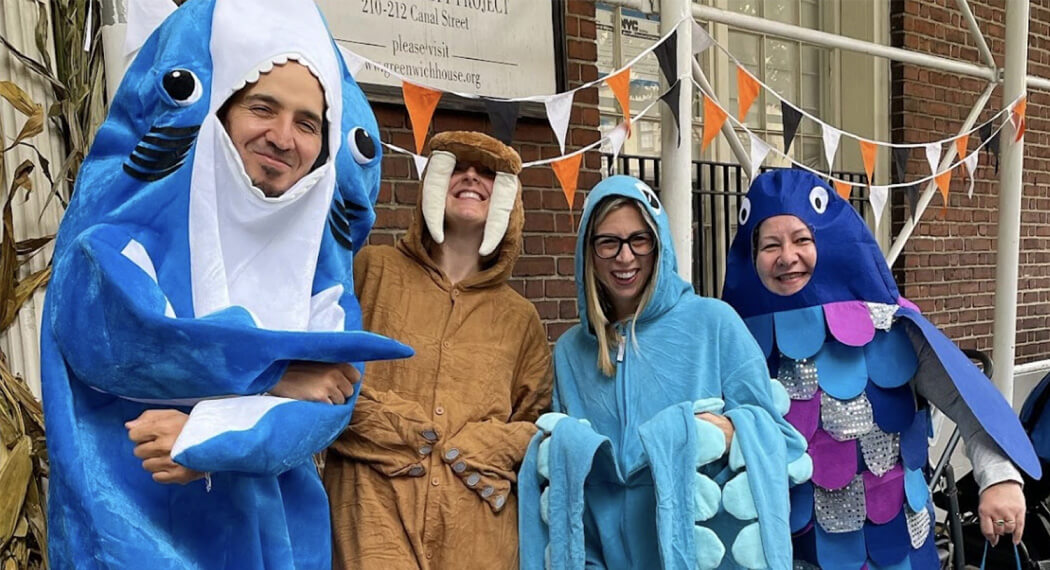Community and Group
Children have come into this year already knowing a lot about school. They are familiar with the school spaces, they have a basic understanding of the routines of our day (meeting, snack), and they have met many of our specialist teachers.
This year, your children will focus on being part of a community or group. Every classroom at Barrow works on this skill, but it becomes particularly important in the 3s/4s year. The children have an emerging interest in being one of the larger group. They experiment in cooperative play, designating “roles” for the game. An early cooperative game we’ve seen is a “family” game, in which there are grownup and children roles. Each role has a set of “rules” – for example, children do not go to work, but grownups do.
The class is practicing turn-taking by raising hands during meeting and waiting to be called on. Students are practicing really listening to each other, and showing that they are listening by turning and facing the person who is talking. They are working on overcoming the frustration of not always being chosen, or not being chosen first.
At home, you can practice creating rules and roles for games that you play together. Before starting a chase/monster game, for example, you might set up some basic rules:
- You can say “stop” if you want to stop the game.
- No grabbing clothes.
- No hitting.
- You can make scary faces and scary sounds.
- This area of the room is the “safe spot” where the monster can’t go.
Independence
In the classroom, we are always thinking about ways to give the children opportunities to do things independently. This looks differently for each child and their unique development. Jonah and I might scaffold one experience twelve different ways for twelve different children.
We are especially thinking about independence in terms of personal care routines at this point in the year. For example, we ask the students to help us set up snack some days of the week. We also encourage children to dress and undress themselves. Soon, we will begin Class Jobs, which offer greater responsibility for things like reading the schedule, holding the door for others, and taking attendance.
At home, you can practice independence by having your children dress and undress themselves (including coats!). Give them practice with zippers and buttons of all kinds. Take time to practice putting on shoes and socks. Some reminders we like to give for this are: “Hold your shoe from the back while putting your foot in. Pull out the “tongue” of the shoe. Stretch your sock wide before putting it on over your toes.” Give your children responsibilities and chores at home! These should be real, helpful jobs like drying dishes, setting the table, or putting clothes in the washing machine.

“ We use a wide variety of materials at the rug, including puzzles, books, fabric scarves, and small wooden planks. This is also where we have our meeting, read the schedule, and have our read-aloud.”

At home, have your child practice reading books independently. This will be more successful if the child has already read the book once or twice with an adult. At first, children might be resistant to this, and often claim, “I can’t read!” We like to say, “Well, you can look at the pictures to help you tell the story. You also might remember some of the story from when we read it together.”
At our tables, we work with various building materials, like tree blocks and wooden stacking rocks. We might also work on puzzles at the table if the rug is otherwise busy.
We have an art table, where we introduce different artistic materials. We have been including literary “inspiration” in the center of our art table, encouraging the children to draw more representationally.
We have a variety of writing materials at the writing table, such as index cards, post-it notes, and golf pencils with erasers. Throughout the year, we might add other materials like envelopes, stickers, stamps, or notepads. Children might come to this area to make signs for play or write cards to one another.
At home, you can encourage writing by having those materials available for play. Include real-world materials like the ones we have listed above. Small pencils, like golf pencils, are bets for encouraging children to use a tripod grip. At home, you can also work on representational art by describing what you are drawing in a picture. For example, if I am making a face, I might narrate aloud: “I know a face is a circle shape, so I am starting with a circle. Okay, I need eyes next. How many eyes do I want to draw? What color eyes should I make? I know that my hair is straight, so I am going to make straight lines for my hair…”
Blocks are a wonderful place for exploring symmetry, balance, and geometry. Children learn the attributes of different shapes (squares and rectangles are made up of four straight lines. Triangles are made up of three straight lines), and begin to construct shapes using other shapes. For example, they might take two right triangles and make a square. Blocks are also great for regulation (they are heavy!), teamwork, collaboration, and storytelling through the introduction of props.
At home, build together! Talk about the shapes that you are building with, and talk about their attributes, using language similar to above. Describe the parts of a structure you are building. If it’s a house, where is the door? The windows? If it’s a restaurant, where do the chefs work? Where do the customers sit? Introduce literacy elements by making signs and labels.
The light table is a place for wonder! We explore the principles of light, opacity, and color/color mixing. Right now, we are working with window blocks of various colors, gems, and squares of different colors. We will continue to introduce new materials to this area throughout the year.
Exploration is generally how we start our day. During this time, children explore the materials around the room. They make independent choices about what they want to do and who they want to play with. During this time, Jonah and I are working to sprinkle in early literacy, math, and science skills.
As the year goes on, our materials in exploration will shift to adapt to our curriculum. The curriculum will emerge from your children’s interests and questions. Jonah and I will also explore early math, science, literacy concepts through different materials. For example, we might use number boards to build concepts of quantity and comparison. We might use the scientific method to explore an unknown material in the sensory table. We might act out a story that we read together, talking about the sequencing of a story (first, next, last).
At home, you can ensure that your children have time to play independently. If possible, set up a few options and let them choose what they want to work with. Having fewer choices can encourage longer focus and greater creativity!
Meeting is another time to come together as a class community. There are many opportunities for practicing early literacy skills, such as reading the schedule (moving left to right, connecting the picture with the letters/word) and singing rhyming songs. Children are learning to engage in group conversation by listening to and building upon each other’s ideas. Children are practicing disagreeing with one another respectfully.
At home, you can practice rhyming games by singing songs and reading poems. Emphasize the last sound(s) of the rhyming words, so that children can hear how they are similar.
Jonah and I believe that snack should be a special experience for the children. We have centerpieces and tablecloths. We have snack conversations. Your children practice sharing snack with one another, and navigating what happens when one person takes a lot of snack and someone does not get what they need. This is another way that your children work on being in a group together. We ask the students to bring their cup and plate to the sink when they’re finished eating to help clean up.
At home, encourage your children to help set up and clear the table. You could even add in some math skills as you set the table! For example, you might say, “There are four people in our family – Daddy, Dada, you, and your brother. How many plates do we need? Okay, can you count out four plates? We need the same number of cups – so how many cups do we need?” Have conversations about your day while you eat! This is a great time for you to model talking about your day, which might encourage your children to share about their day at school.
Three days a week, we have specials. Music with Ozan and Pottery with Pottery Dave happen in the classroom. Art with Jim and Movement with Kyleigh happen outside of the classroom, and children attend these last two specials in half- groups. These specials give children more opportunities to work towards the same goal – we are all painting with yellow paint, or we are all making pots in pottery. These are also times for your children to practice structured experiences; as opposed to the freedom of exploration, the specialist teachers are asking your child to complete a specific task.
Read-Alouds are one of our favorite times of day in the Green Room. Four days of the week, we read a story as a group. These read-aloud sessions often last thirty minutes or more! On Thursdays, a heavy specials day, we instead read a poem, which you can find posted on our classroom door.
During read-alouds, we are encouraging your students to think critically about the story they are listening to. They ask questions, make predictions about what will come next, and share thoughts when the book is finished. They are learning the role of an author and an illustrator, and making connections between books we’ve read by the same author.
At home, when reading together, ask your child questions about what you’re reading and encourage them to ask questions, as well. Look closely at the illustrations together and notice the details. Talk about the author and illustrator (sometimes they are the same!). Encourage your child to “predict” what is going to happen next.
We visit the roof, the tricycle track, and the gym. Sometimes, we share these space with another class. During these moments, your children practice modulating their actions to fit with the other class – they might have to be gentler and slower around younger children, for example, but could do some more rough-and-tumble play with the older classes. Gross motor spaces are great for encouraging teamwork. In order to move heavy blocks on the roof, or in order to make a tall structure in the gym, children will need to rely on each other and ask for help.
Each day, we take attendance to see who is present and who is absent that day. This is not only a great way to build community (you are still important to our class community, even if you are not physically here), but also an opportunity to build early math and literacy skills. We count the people who are present, using our fingers to point to each person as we count them. We have identity cards, which have the child’s name and photo on them. These cards build literacy skills in a similar way to our schedule cards: the children begin by recognizing the picture, then start to identify the letters underneath.
When a child is absent, we send them an email to let them know that we are thinking about them. A sample of this email is pictured above. Children begin to think about what might help their classmate feel better, if they are sick, or what might help them feel cared for, if they are absent for another reason.
We have been making a collaborative list of rules and agreements for our class community. We started this list in the first weeks of school and will continue to build it as the year goes on. It’s a living document, detailing the different needs of our community throughout the year. Right now, we have meeting rules, safety rules, snack rules, and material rules. These rules use the children’s own language and will be supplemented with pictures to support independent reading of the rules.
Meeting Rules:
- Raise your hand.
- Look and listen.
Safety Rules:
- Don’t stand up high; stand on the Coor or the rug.
- Don’t grab; do ask.
- No hurting people; yes holding hands; yes touching very gently.
- Don’t throw; look at it, see it, throw it.
Snack Rules:
- Drink water. Pour into your cup and drink it. Not too many. Don’t play with your water.
- Don’t roll your cup; do put it down.
- Eat the food; don’t play with it.

